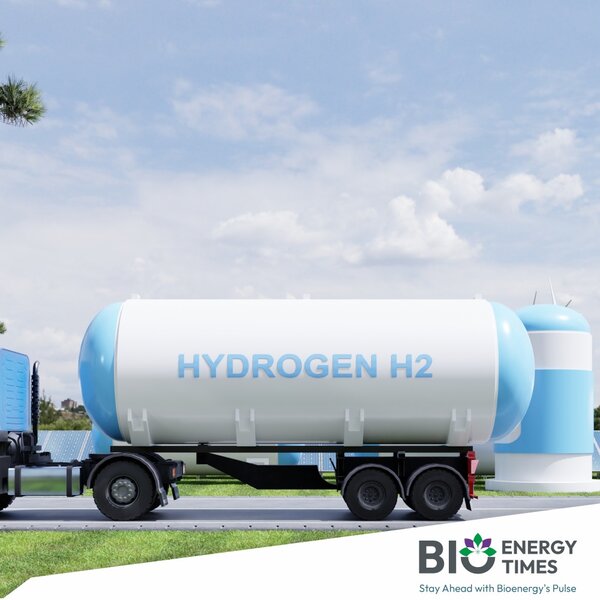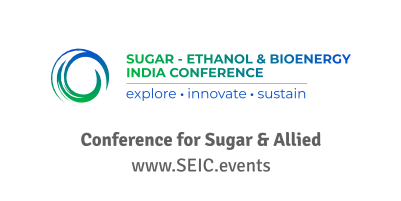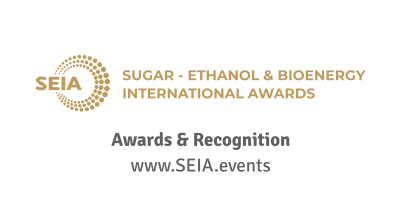The RIKEN Center for Sustainable Resource Science (CSRS) in Japan has made a significant discovery that could revolutionize the energy industry. Their research team has developed a method to dramatically reduce the need for iridium, a rare and expensive metal, in hydrogen fuel production. This innovation could make “green hydrogen” more accessible and affordable, paving the way for a carbon-neutral hydrogen economy.
- The Power of Green Hydrogen:
Green hydrogen, produced through electrolysis using renewable energy sources, is a zero-emissions energy carrier with vast potential. It holds promise for powering a wide range of applications, from transportation (e.g., hydrogen fuel cell vehicles) and industry (e.g., steel production) to buildings (e.g., heating systems). This breakthrough in catalyst technology brings us closer to realizing this clean energy future. - A Closer Look at the Breakthrough:
The RIKEN team’s innovative approach involves combining iridium with manganese oxide to create a highly efficient catalyst for hydrogen production. By dispersing individual iridium atoms onto the manganese oxide, they’ve achieved a dramatic reduction in iridium usage (up to 95%) without compromising hydrogen production rates. - Longevity and Efficiency for Real-World Use:
Extensive testing has shown that the RIKEN catalyst maintains consistent performance over extended periods. It has sustained hydrogen production for over 3000 hours (approximately four months) at 82% efficiency, demonstrating its reliability and practicality for large-scale applications. - Broader Implications: A Greener Future Within Reach
This breakthrough has several positive implications. Lower upfront costs due to reduced iridium dependence will make green hydrogen more attractive for investment. Additionally, faster transition towards sustainable hydrogen production becomes a reality. These developments bring us closer to achieving a clean energy future. - Collaboration and Integration: Accelerating the Journey
The potential for rapid implementation and impact is further highlighted by the RIKEN team’s collaboration with industry players. Testing the catalyst at scale and integrating it into existing hydrogen production processes paves the way for a smoother transition towards a hydrogen-based economy.
The Discovery
The new method utilizes manganese oxide sprinkled with individual iridium atoms, reducing iridium content needed by up to 95% without affecting hydrogen production rates. Iridium, the current best catalyst for breaking water bonds to free hydrogen, is rare and expensive, hindering large-scale use. The RIKEN team’s approach allows for sustained hydrogen production for over 3000 hours (about four months) at 82% efficiency without degradation.
How It Works
The RIKEN CSRS method employs a catalyst composed of manganese oxide sprinkled with individual iridium atoms. Here’s a simplified explanation:
•Catalyst Composition: Individual iridium atoms are dispersed onto a piece of manganese oxide, ensuring they don’t touch or clump together.
- Electrochemical Reaction: The catalyst is used within a proton exchange membrane (PEM) electrolyzer, a device that splits water into hydrogen and oxygen using electricity.
- Hydrogen Production: When water enters the system, the catalyst facilitates the breakdown of water molecules (H₂O) into hydrogen (H₂) and oxygen (O₂). The iridium atoms act as active sites for the oxygen evolution reaction, a critical step in water splitting.
- Efficiency and Sustainability: Despite the significant reduction in iridium usage, the rate of hydrogen production remains unchanged. This translates to a catalyst that’s just as effective as pure iridium but much more sustainable and cost-effective.
- Longevity: Testing has shown the catalyst can sustain hydrogen production for over 3000 hours (approximately four months) at 82% efficiency without degradation.
This innovative approach bridges the gap between rare metal- and common metal-based electrolyzers, enabling a gradual transition to completely sustainable green hydrogen production. It’s a promising step towards scaling up hydrogen production to meet global energy demands without relying on rare and expensive metals like iridium.
Alternatives to Iridium
The high cost and scarcity of iridium have driven research into alternative materials for hydrogen fuel production. Here are some promising options: - Ruthenium: This precious metal has shown potential as a positive-electrode catalyst when doped with nickel.
- Manganese Oxide: As mentioned earlier, the RIKEN CSRS team successfully utilized manganese oxide to significantly reduce iridium content.
- Common Earth Metals: Researchers are aiming to develop new catalysts based on these more abundant and sustainable materials for long-term solutions.
These ongoing efforts aim to find sustainable and cost-effective alternatives to iridium for large-scale hydrogen production, ultimately making green hydrogen a viable energy source for the future.
Challenges in Developing Alternative Catalysts
Developing alternative catalysts for hydrogen fuel production presents several challenges: - Activity: Finding materials that match iridium’s or other noble metals’ ability to accelerate the oxygen evolution reaction (OER) is a significant hurdle.
- Stability: The catalyst needs to withstand the harsh conditions of water electrolysis. Electrolyzers often involve acidic environments, where many non-noble metal-based electrocatalysts quickly degrade.
- Cost: The alternative material must be affordable, not just in terms of raw materials but also considering the manufacturing process.
- Scalability: The catalyst should be easy to produce on a large scale without significant performance loss.
- Efficiency: Maintaining high efficiency over time is crucial for commercial viability.
- Environmental Impact: The production and disposal of the catalyst should have minimal environmental impact.
Researchers are tackling these challenges by: - Exploring nanoengineering approaches to create catalysts with desired properties.
- Developing new materials with the necessary activity, stability, and cost-effectiveness for sustainable hydrogen production.
Recent Breakthroughs in Catalyst Research
Recent advancements in catalyst research offer promising prospects for hydrogen fuel production: - RIKEN CSRS Breakthrough: Their method significantly reduces iridium requirements for green hydrogen production, making it more feasible for a carbon-neutral future.
- Green Hydrogen Production: This global research effort is finding ways to produce hydrogen without compromising efficiency by reducing reliance on iridium.
- Earth-Abundant Catalysts: Research is shifting towards more sustainable and widely available materials for catalyst development.
- University of Kansas Discovery: Chemists have unraveled the complete reaction mechanism for a class of water-splitting catalysts, paving the way for cleaner hydrogen energy production.
- Cornell’s Nonprecious Metal Derivatives: These derivatives demonstrate the potential to nearly match the performance of platinum in fuel cell reactions, offering a more cost-effective solution.
These breakthroughs pave the way for cleaner and more efficient hydrogen production, contributing to a more sustainable energy future.
Impact on the Energy Industry
Recent breakthroughs in catalyst research have the potential to significantly impact the energy industry in several ways: - Cost Reduction: By reducing reliance on expensive and rare materials like iridium, the cost of producing hydrogen fuel can be significantly lowered, making it more competitive with fossil fuels.
- Increased Efficiency: Advancements in catalysts can lead to more efficient energy production, storage, and utilization, contributing to overall energy savings.
- Scalability: Improved catalyst technology can enable the scaling up of hydrogen production facilities, making it feasible to meet the growing global demand for clean energy.
- Environmental Benefits: The shift towards more sustainable catalysts and increased green hydrogen production can help reduce greenhouse gas emissions, aiding in the fight against climate change.
These factors can collectively lead to: - Economic Growth: The development and deployment of new catalyst technologies can stimulate economic growth by creating new industries and job opportunities.
- Energy Security: With improved catalysts, countries can produce their own hydrogen fuel, reducing dependence on imported fossil fuels and enhancing energy security.
- Innovation Acceleration: The success of these breakthroughs can encourage further research and development in the field, leading to more innovations and advancements.
Overall, these breakthroughs hold immense potential to create a cleaner, more sustainable, and economically viable energy future.
Conclusion
The breakthrough by the RIKEN CSRS team in Japan represents a significant leap forward in the quest for sustainable and cost-effective hydrogen production. By dramatically reducing the need for iridium, a rare and expensive metal, they have made green hydrogen a more viable and accessible alternative to carbon-based fuels. This innovation, along with ongoing research into alternative catalysts and supportive policies, paves the way for a carbon-neutral hydrogen economy.
The journey towards this future will require collaboration between researchers, policymakers, industry leaders, and society as a whole. By fostering a conducive environment for innovation and adoption, we can accelerate the pace of change and maximize the benefits of green hydrogen technology. Each individual and organization has a role to play in this transformative journey, and together, we can shape a greener, more sustainable world for generations to come.
The future of energy may indeed be green and hydrogen-based. This is an exciting time for the energy industry and for society as a whole, as we stand on the brink of a potential energy revolution. The promise of green hydrogen as a clean,abundant, and efficient energy source could transform how we power our world, leading to a more sustainable and prosperous future for all.
Disclaimer: The views and opinions expressed in the article by Dilip Patil, Managing Director of Samarth SSK Ltd., are solely his own.















Good news for our future.